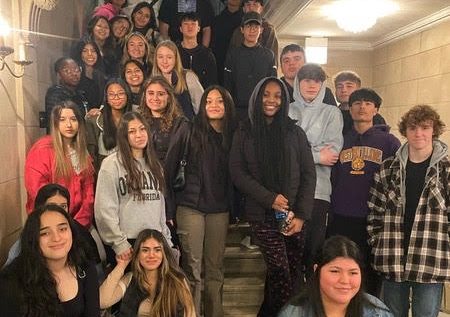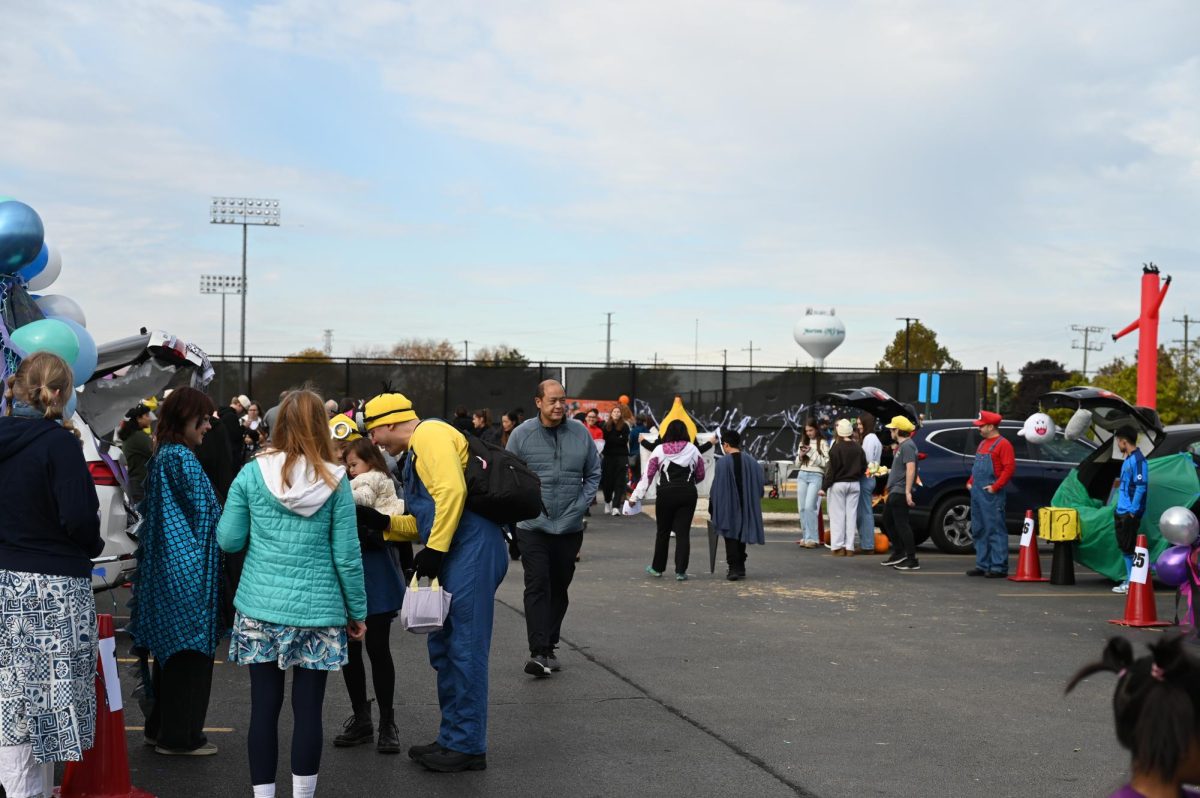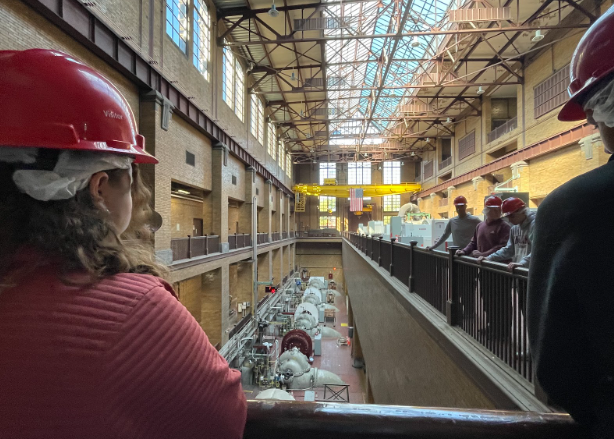The International Museum of Surgical Science halls echo with the footsteps of medical pioneers, showcasing a rich tapestry of surgical instruments, anatomical drawings and artifacts spanning centuries. Students are transported through time, gaining insight into the evolution of surgical practices from ancient civilizations to the cutting-edge technologies of the present day.
The museum was designed after Queen Marie Antoinette’s playhouse, and by the 1950s, through the efforts of Dr. Max Thore, the museum began to receive donations of objects and artwork from individual surgeons, collections and institutions. The lakeside museum opened to the public on September 9, 1954; almost 70 years later, students taking Anatomy and Physiology I with Anatomy Teachers Tina Schdmit and Cameron Slife are stepping into the same marble walls.
One of the first exhibits the students were guided through was the Hall of Immortals: a large open room containing twelve stone statues of great figures in the field of medicine, ranging from people like Hippocrates to Louis Paster. Students then filed into the Hall of Murals, where they learned about the development of surgical science through the ages from large paintings depicting surgeries and meetings.
The museum also dedicated galleries devoted to France, Spain, Japan, the Netherlands and more. Rooms were filled with historical collections, tracing each nation’s contribution to surgery. There are further galleries on current and ancient diseases, plaques discussing contemporary healing practices, interesting facts about certain tools dedicated to surgeries, and of course, the eye-capturing, marvelous gift shop.
Students were then able to go through a scavenger hunt to visit more rooms that they may have missed out on, or were curious for a more in-depth explanation, allowing for a self-guided tour option.
“I feel like the scavenger hunt could’ve been done while we were doing the tour guide. The issue was just the time, and we got back so early, we could’ve spent at least 40 more minutes there. I think there is a lot to be learned in the museum. The tour guide highlighted some really interesting things. I still had a lot of fun regardless,” senior Summer de la Cruz said.
Other students felt there were still some elements missing to make the trip more interesting.
“To me, the museum was interesting but I feel like there could have been more added. I was expecting to see more inventions about surgery. I think it was better when it was individual because you don’t have distractions from other people, and you can read up on the [plaques] on your own,” senior Niyah Lewis said.
The timing of the field trip was a concern for many students.
“You learn from the guide, but you also get this rushed summary on all the things in the room and not the individual things that interest you,” senior Abigail Lopez said.
It was an experience not only for the students but for teachers as well. After 10 years of the Anatomy classes only taking a field trip second semester, Schmidt– who has taught Anatomy for the last 15 years– was interested in bringing this one back to give seniors who are graduating early a field trip.
“I think it was beneficial for students. It was really cool to see how technology and modern medicine has changed over the years, and all the different ways things were done in the past versus what we now know is happening today, so I think it was really cool for students to see,” Schmidt said.
The trip opened up opportunities and allowed students to garner some form of interest in the world of surgical science. However, Anatomy and Physiology isn’t a class simply for those who dream to work in health and medical professions, but for anyone curious about the body and its unique functions.
“These science courses specifically related to anatomy and physiology are really challenging in college, so it’s really helpful to have a strong base when you have to potentially take it again in college. You already have a good framework to build upon. There’s really nothing more important than knowing about your body and how to keep yourself healthy and safe and make good decisions for your body,” Schmidt said.
If anyone is interested in what Anatomy and Physiology has to offer, along with sneak peeks of what the class is currently doing, follow @nileswestanatomy on Instagram.








